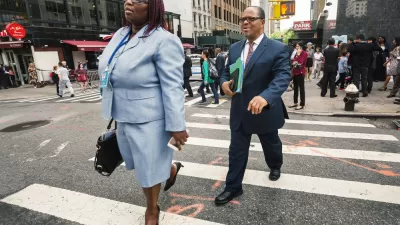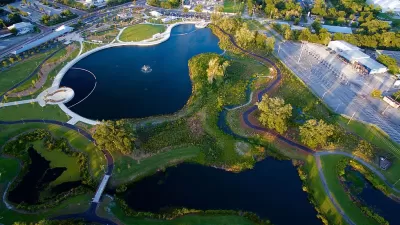A new study offers evidence that walking in a natural setting is more beneficial to mental health than walking in an urban setting.
Researchers have known for some time that urban dwellers tend to have higher levels of anxiety and depression than people living outside of cities. Until now, they didn't know why. A new study from the Emmett Interdisciplinary Program in Environment and Resources at Stanford University explores the link between mental health and exposure to natural environments.
The study, published in Proceedings of the National Academy of Sciences, was designed to investigate the effects of a nature walk vs an urban walk on levels of rumination, what is commonly known as brooding. The findings of the controlled experiment by Gregory Bratman and his colleagues indicate that a walk in the park affects the brain in meaningful ways, whereas a walk through an urban environment does not. "We show in healthy participants that a brief nature experience, a 90-min walk in a natural setting, decreases both self-reported rumination and neural activity in the subgenual prefrontal cortex (sgPFC), whereas a 90-min walk in an urban setting has no such effects on self-reported rumination or neural activity."
There is much debate about the causes of the dramatic rise in psychiatric diagnoses of mental disorders over the past decade. As the authors note, there are many benefits to urbanization, however, with 70 percent of the global population expected to live in urban environments by 2050, the implications of the study are important to understanding how to treat the epidemic of mental illness. The study reveals "a pathway by which nature experience may improve mental well-being and suggests that accessible natural areas within urban contexts may be a critical resource for mental health in our rapidly urbanizing world."
Hat tip to Gretchen Reynolds for reporting on the study.
FULL STORY: How Walking in Nature Changes the Brain

Pennsylvania Mall Conversion Bill Passes House
If passed, the bill would promote the adaptive reuse of defunct commercial buildings.

World's Largest Wildlife Overpass In the Works in Los Angeles County
Caltrans will soon close half of the 101 Freeway in order to continue construction of the Wallis Annenberg Wildlife Crossing near Agoura Hills in Los Angeles County.

U.S. Supreme Court: California's Impact Fees May Violate Takings Clause
A California property owner took El Dorado County to state court after paying a traffic impact fee he felt was exorbitant. He lost in trial court, appellate court, and the California Supreme Court denied review. Then the U.S. Supreme Court acted.

New Forecasting Tool Aims to Reduce Heat-Related Deaths
Two federal agencies launched a new, easy-to-use, color-coded heat warning system that combines meteorological and medical risk factors.

AI Traffic Management Comes to Dallas-Fort Worth
Several Texas cities are using an AI-powered platform called NoTraffic to help manage traffic signals to increase safety and improve traffic flow.

Podcast: Addressing the Root Causes of Transit Violence
Deploying transit police is a short-term fix. How can transit agencies build sustainable safety efforts?
City of Costa Mesa
Licking County
Barrett Planning Group LLC
HUD's Office of Policy Development and Research
Mpact Transit + Community
HUD's Office of Policy Development and Research
Tufts University, Department of Urban and Environmental Policy & Planning
City of Universal City TX
ULI Northwest Arkansas
Urban Design for Planners 1: Software Tools
This six-course series explores essential urban design concepts using open source software and equips planners with the tools they need to participate fully in the urban design process.
Planning for Universal Design
Learn the tools for implementing Universal Design in planning regulations.


























